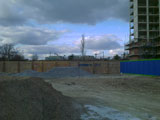EIA, PPC & COMAH
An Environmental Impact Assessment may be required to accompany a planning applications, particularly for large or potentially polluting developments in sensitive areas. EIA is a means of drawing together, in a systematic way, an assessment of a project's likely significant environmental effects. This helps to ensure that the importance of the predicted effects, and the scope for reducing them, are properly understood by the public and the relevant planning authority before it makes its decision. Some developments, Schedule 1 developments always require an EIA; others, Schedule 2 developments, may require an EIA, particularly if they are in sensitive areas.
The Environmental Permitting Regulations consolidate the previous permitting regulations made under Pollution Prevention and Control, and establishes an extensive system of regulatory measures designed to protect and enhance our environmental heritage. The regulations set out requirements to assess the potential impacts on a wide range of environmental issues prior to the development of major infrastructure and industrial projects, and allow for stringent enforcement measures to control and minimise these impacts.
The Control of Major Accident Hazards (COMAH) Regulations require large hazardous industries to prepare a 'safety report', which must presented to the regulators to enable them to be satisfied that the Company has taken sufficient and appropriate mitigation to prevent a major accident occurring as a result of its operations.
NEMS has carried out many commissions relating to environmental permitting and assessments,
including background air, water and soil sampling, and monitoring of source
emissions. Both techniques call for well-designed sampling strategies in order
that the information gained may be both pertinent and provide an accurate
reflection of the situation in hand. The use of baseline surveys prior to
development, followed by sampling during construction and operation of a project
enables the developer and operator, and the regulatory authority, to determine
any potential problem areas and to develop cost-effective and efficient
solutions.
Case Study 1
Following an audit, a wood furniture manufacturer, based in NE England, was found to be exceeding the annual solvent usage threshold, requiring them to apply for a LA-PPC Permit.
NEMS prepared the Permit application, and assisted the Company with preparing written operating, maintenance and emergency procedures.
An assessment of the Company's emissions to atmosphere was carried out for the solvent-using processes, incorporating stack height calculations and dispersion modelling.
The Company was duly given a PPC Permit by the Regulator, within three months of NEMS being contacted.
Case Study 2
NEMS assisted a major UK armament manufacturer compile assessments of the likely hazards to the environment, based on identified major accident scenarios occurring at its manufacturing facilities.
The study required detailed review of the precursors to an event, together with dispersion modelling of chemical releases after the event, to assess the potential for a Major Accident to the Environment (MATTE) occurring.Experience
NEMS staff have been involved in projects from the design and conception phase, assessment of the potential environmental impacts, assisting progress through the planning stage, to the development and undertaking of comprehensive monitoring and control strategies to minimise any perceived impacts.
Examples include:- preparation of EIAs as part of the planning procedure
- preparation of PPC Permit applications
- air quality impact assessments from proposed incinerator and power station developments
- baseline and construction-phase background air quality assessments for industrial and major infrastructure projects
- PPG24 noise assessments for existing and proposed developments
- air quality assessments to support CoMAH safety reports
- landfill gas surveys on redeveloped waste disposal sites
- pre-acquisition contaminated land surveys
- water quality and effluent sampling

